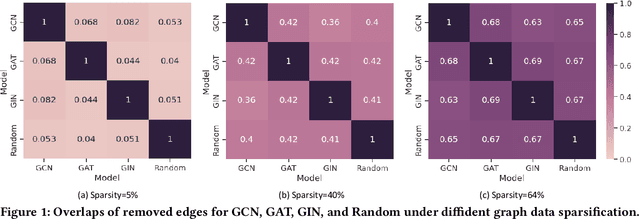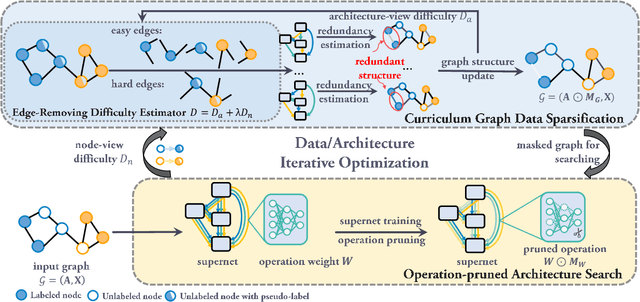Simin Wu
Towards Lightweight Graph Neural Network Search with Curriculum Graph Sparsification
Jun 24, 2024



Abstract:Graph Neural Architecture Search (GNAS) has achieved superior performance on various graph-structured tasks. However, existing GNAS studies overlook the applications of GNAS in resource-constraint scenarios. This paper proposes to design a joint graph data and architecture mechanism, which identifies important sub-architectures via the valuable graph data. To search for optimal lightweight Graph Neural Networks (GNNs), we propose a Lightweight Graph Neural Architecture Search with Graph SparsIfication and Network Pruning (GASSIP) method. In particular, GASSIP comprises an operation-pruned architecture search module to enable efficient lightweight GNN search. Meanwhile, we design a novel curriculum graph data sparsification module with an architecture-aware edge-removing difficulty measurement to help select optimal sub-architectures. With the aid of two differentiable masks, we iteratively optimize these two modules to efficiently search for the optimal lightweight architecture. Extensive experiments on five benchmarks demonstrate the effectiveness of GASSIP. Particularly, our method achieves on-par or even higher node classification performance with half or fewer model parameters of searched GNNs and a sparser graph.
LLM4DyG: Can Large Language Models Solve Problems on Dynamic Graphs?
Oct 26, 2023Abstract:In an era marked by the increasing adoption of Large Language Models (LLMs) for various tasks, there is a growing focus on exploring LLMs' capabilities in handling web data, particularly graph data. Dynamic graphs, which capture temporal network evolution patterns, are ubiquitous in real-world web data. Evaluating LLMs' competence in understanding spatial-temporal information on dynamic graphs is essential for their adoption in web applications, which remains unexplored in the literature. In this paper, we bridge the gap via proposing to evaluate LLMs' spatial-temporal understanding abilities on dynamic graphs, to the best of our knowledge, for the first time. Specifically, we propose the LLM4DyG benchmark, which includes nine specially designed tasks considering the capability evaluation of LLMs from both temporal and spatial dimensions. Then, we conduct extensive experiments to analyze the impacts of different data generators, data statistics, prompting techniques, and LLMs on the model performance. Finally, we propose Disentangled Spatial-Temporal Thoughts (DST2) for LLMs on dynamic graphs to enhance LLMs' spatial-temporal understanding abilities. Our main observations are: 1) LLMs have preliminary spatial-temporal understanding abilities on dynamic graphs, 2) Dynamic graph tasks show increasing difficulties for LLMs as the graph size and density increase, while not sensitive to the time span and data generation mechanism, 3) the proposed DST2 prompting method can help to improve LLMs' spatial-temporal understanding abilities on dynamic graphs for most tasks. The data and codes will be open-sourced at publication time.
 Add to Chrome
Add to Chrome Add to Firefox
Add to Firefox Add to Edge
Add to Edge